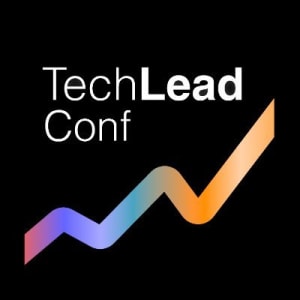AG Grid is the industry standard JavaScript datagrid for building data centric Business Applications. Recently the AG Grid team redesigned the grid to implement the React Rendering Engine in 100% React code. Given the complexity of a datagrid, this was a very challenging task. Hear from Niall, the founder of AG Grid, about the journey of this migration including how this was achieved, lessons learned along the way, and how it will impact your React applications using AG Grid.
AG Grid's New React Rendering Engine
Video Summary and Transcription
Today's Talk introduces AG Grid's new React rendering engine, highlighting its features and benefits. The difference between AG Grid and React table is explained, emphasizing AG Grid's powerful UI and enterprise capabilities. The integration of AG Grid and React is discussed, showcasing how React is used throughout the grid and its customizations.
1. Introduction to AG Grid and React Rendering
My name is Niall. Today, I'm going to be talking about the new React rendering engine that we have in AG Grid. AG Grid is an enterprise component with cool features like row grouping and charting directly from the grid. It puts your app on steroids.
My name is Niall. I'm the guy who started the AG Grid project. It's great to be here. Today, I'm going to be talking about the new React rendering engine that we have in AG Grid.
Now, before we start, just a quick intro for what AG Grid is in case some of you don't know. Up here is a small example using AG Grid. This example has got, hold it up. One, two, three, sorry. This example has got 10,000 rows and 1,000 updates per second. So, those flashy lights that you see are the 1,000 updates per second coming in.
Now, we're an enterprise component. So we come with lots of cool enterprise type features. Like turning your screen black. So this is row grouping. So, we've grouped the data and you notice that at the group level, the numbers are still, sorry, the group levels have the sums of the values underneath. So, 1,000 updates coming in per second, 10,000 rows, and the groups are being recomputed real-time inside the browser. So, grouping's pretty cool. We also do some other really, really cool stuff like this here. This is charting directly from the grid. So, if you want, hey. If you want to have your application chart like this, you just put in A-G grid and you don't write anymore code. All this stuff comes for free. So, the way I like to see it is pretty much A-G grid puts your app on steroids.
2. Difference between A-G grid and React table
We often get asked the difference between A-G grid and React table. A-G grid comes with a lot of stuff out of the box, including a powerful UI. React table, on the other hand, does not have a UI and requires you to create it yourself. If you want a lightweight library for the web, consider React table. But if you need an enterprise component, go for A-G grid. As a component developer, our challenge is to support different frameworks without rewriting the application. All frameworks result in DOM and CSS, but they differ in their approach. In A-G grid, we make our components simple and rely on shared services for intelligence.
We often get asked the difference between A-G grid and React table. Before I say that, is Taner still here? Are you in the audience? Taner, is he gone? No, he's gone. Oh, he had his Q&A. If there was an award for somebody who's contributed most to the React open-source community, I'd have to say that would go to Taner, with TANstack. It's, like, just amazing with React table, React query. It's pretty cool. But myself and Taner, we decided to work together because A-G grid and React table are different things.
You see, A-G grid comes with a lot of stuff out of the box. It has a UI. It's very powerful. It's like all guns loaded. And that's brilliant when you're writing enterprise applications. React table does not have a UI. You have to create the UI yourself. It takes more code. But sometimes, less is more. And less is more when the pages that you're delivering have to go on the Web, where search engine optimization is something that you're worried about. So if you want a lightweight library that's on the world wide Web, then you should consider React table. But if you want an enterprise component for an enterprise application, then you should consider A-G grid.
Right. What was my talk about again? Right. As a component developer, we have a challenge. How do we support all of the different frameworks without having to write our application again for each framework? Well, we worked out that all these different frameworks, Vue, React, Angular, they all do exactly the same thing. They all result in DOM and CSS. They have to because that's what the browsers understand. The difference is how they go about it. So what we decided to do in A-G grid is make our components as simple as possible. All our components do now is have a template and they set CSS styles and classes. They don't know why, they just set these up. All the intelligence is inside this shared services that we have in A-G grid, then when we bring A-G grid to a new framework like in React, what we can do now is rip the rendering engine out that we have and put a React rendered engine in instead.
3. AG Grid and React Integration
When using A-G grid in React, it's using React 100% throughout the grid. The example shown is live on my laptop, with the product column configured to use a React component. The dancing little robot is in React. It's interesting to see how the application-provided React component lives inside the AG grid cell comp, which is part of the AG grid row comp, and so on, until we reach the grid and the application. React is used all the way from the application to AG grid customizations.
So now when you're using A-G grid in React, it's using React 100% all the way through the grid. Now, that's best explained with a demo. And to help me with the demo, I'm going to invite on stage one of our best developers, Mana. Give it up for Mana. Mana can do lots of wonderful things, including holding microphones. This feels way above my pay grade.
OK. So this is the example that we saw earlier on, but this is live on my laptop. You can see here there's a product column. This is A-G grid. It's written in React. This application is in React, and this is the code. So the grid would take a bunch of columns like this. You can see that the first column is the product column. What I'm going to do is configure that product column to use a React component. So in your app, you could provide a component like this. This is a simple React component. It's just showing an image. Oops. I'm using a touchpad. It's a bit tricky. An image and a value. I'm going to put that into the first column here. Hit save. Go back to my browser. Refresh. Pray. And it works.
So the dancing little robot here, that's in React. But it gets really interesting if I bring up the DevTools and go to the React component section. I'll click out the inspector. Pick my new component, and you can see here on the right-hand side that this application-provided React comp lives inside our AG grid cell comp, which lives inside the AG grid row comp, and so forth and so forth up the hierarchy tree until we get to the grid and we get to the application. So it's using React all the way from your application, into React, and into the customizations for AG grid. And that's it. So thanks very much for your time. Enjoy the rest of your conference.






















Comments